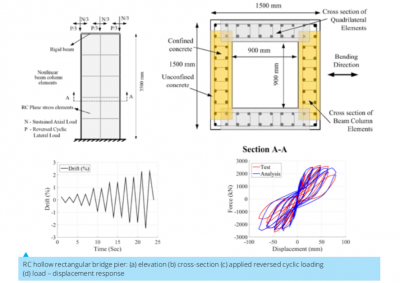
Shear failure is one of the most critical failure modes in reinforced concrete (RC) structures as it is brittle in nature involving the rapid deterioration of strength with increasing widths of the shear cracks. In order to effectively design these structures, it is essential to develop accurate simulation models which can predict their complete nonlinear behaviour. With the development of accurate simulation models, better decisions (retrofitting or demolition) can also be made regarding existing structures during seismic assessments.
Our research mainly focuses on developing rational finite element analysis (FEA) models to predict the nonlinear behaviour of shear critical RC structures. The shear critical regions of RC structures are modelled in our research with 2D elements developed on the basis a biaxial material constitutive model called the cyclic softened membrane model (CSMM). Our simulation models are validated using full-scale test results and used to accurately estimate various parameters required to assess the seismic behaviour of shear critical RC structures such as energy dissipation, residual displacements, post peak strength degradation, ductility and failure modes. A glimpse of the modeling and analysis results of a hollow RC bridge pier tested at the National Centre for Research on Earthquake Engineering (NCREE), Taiwan is shown above.
Prof. Arghadeep Laskar
